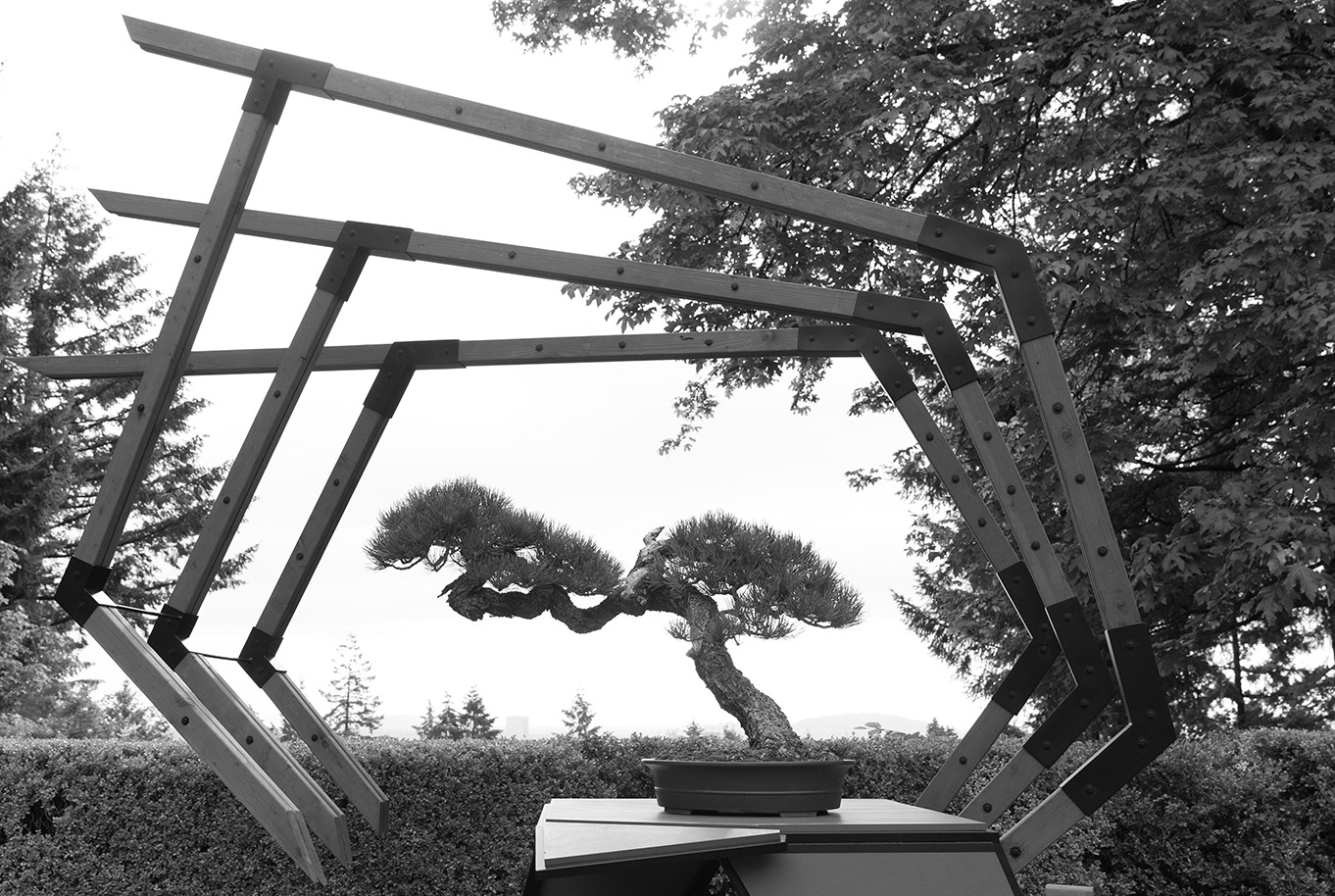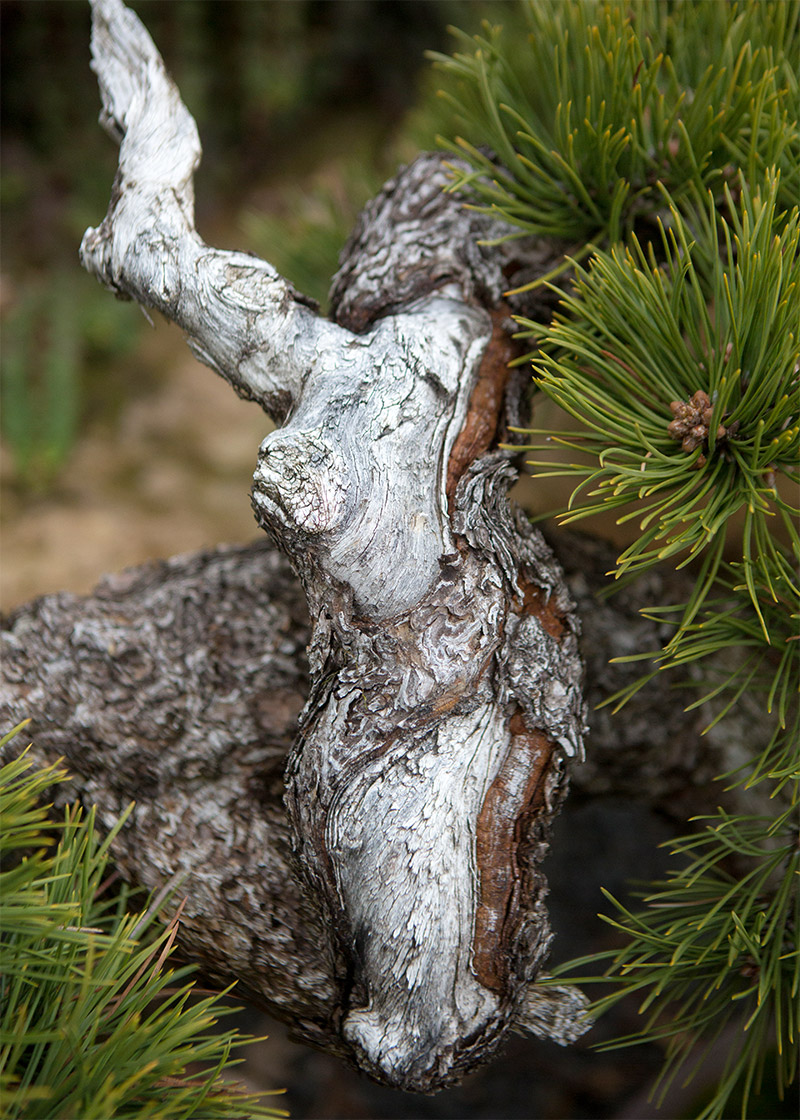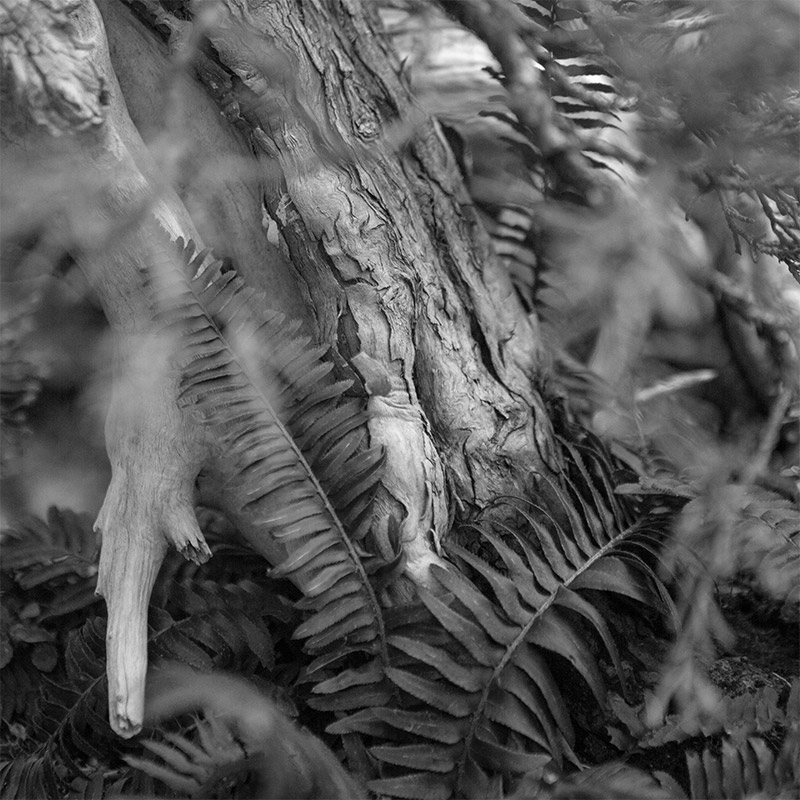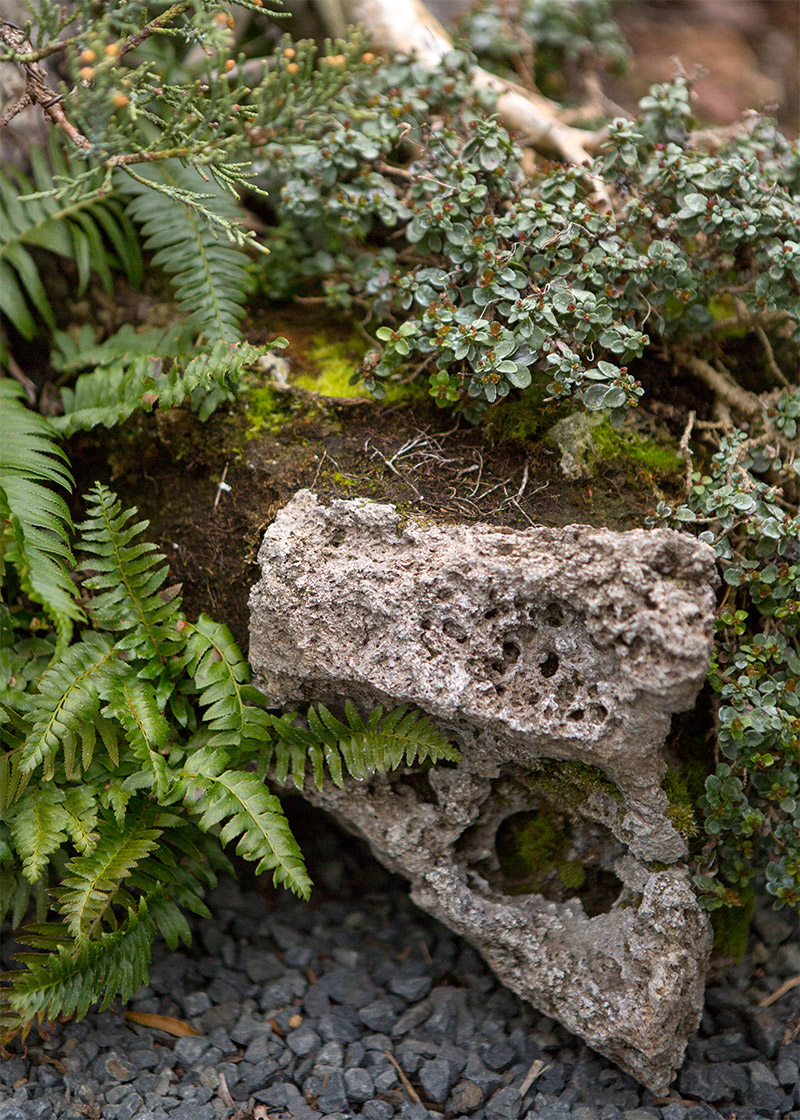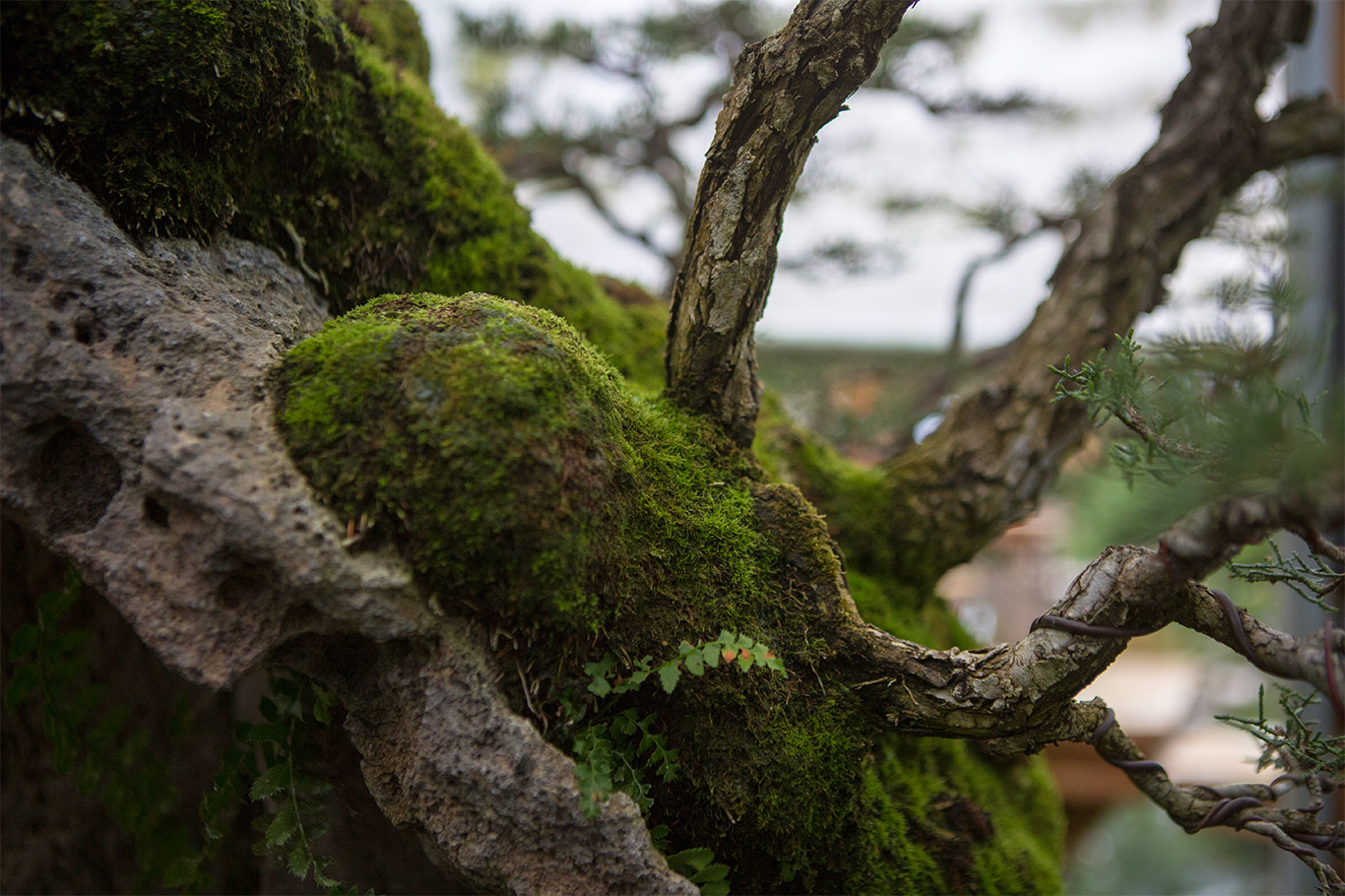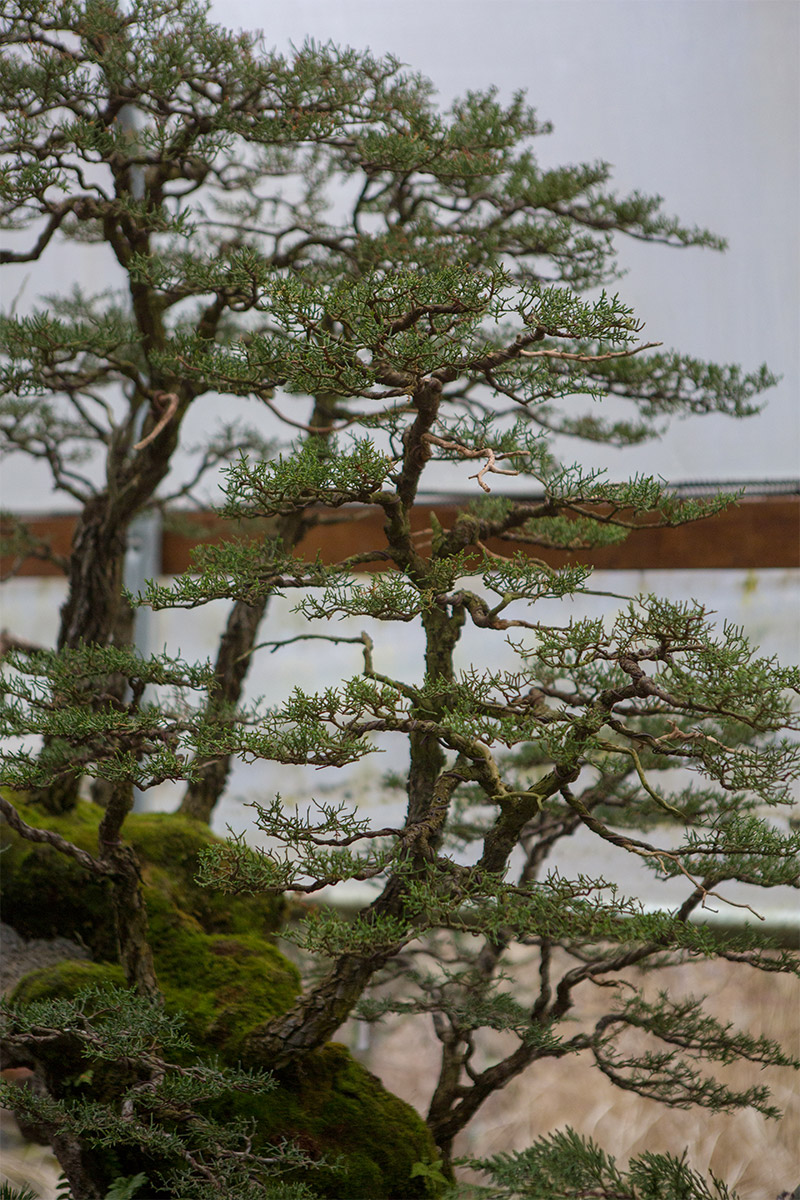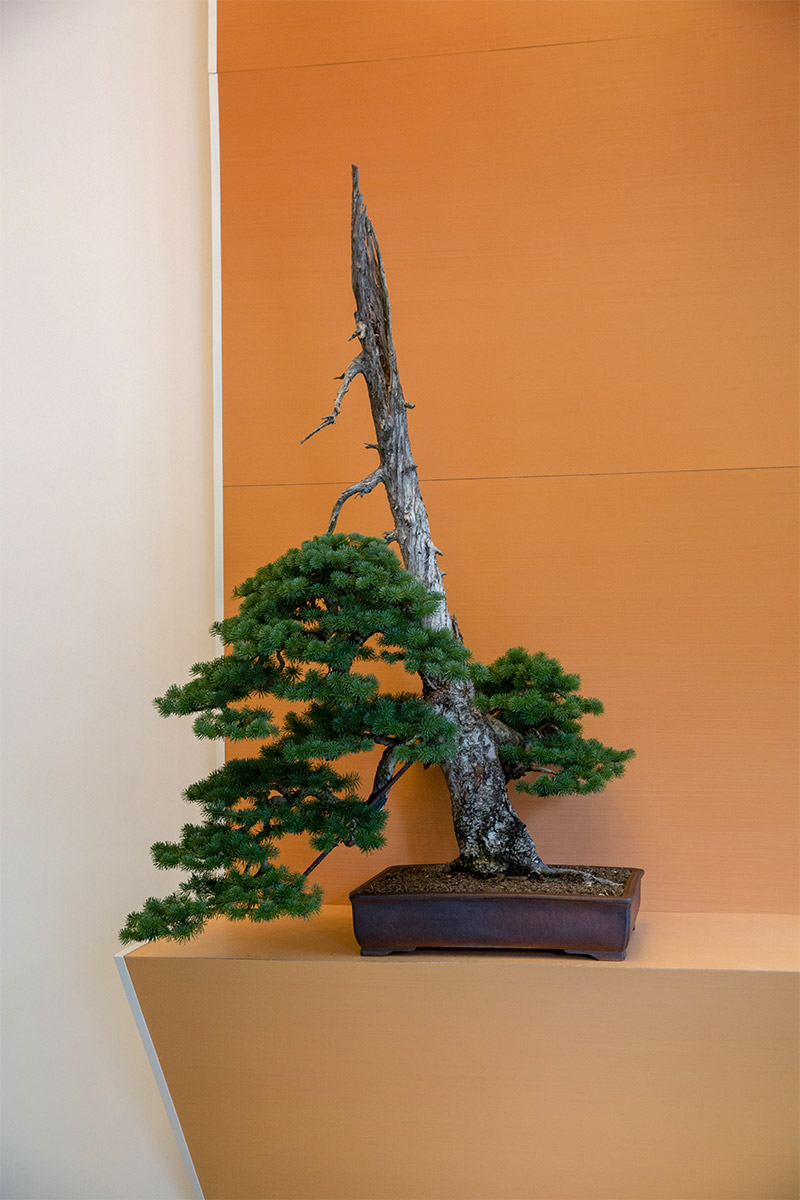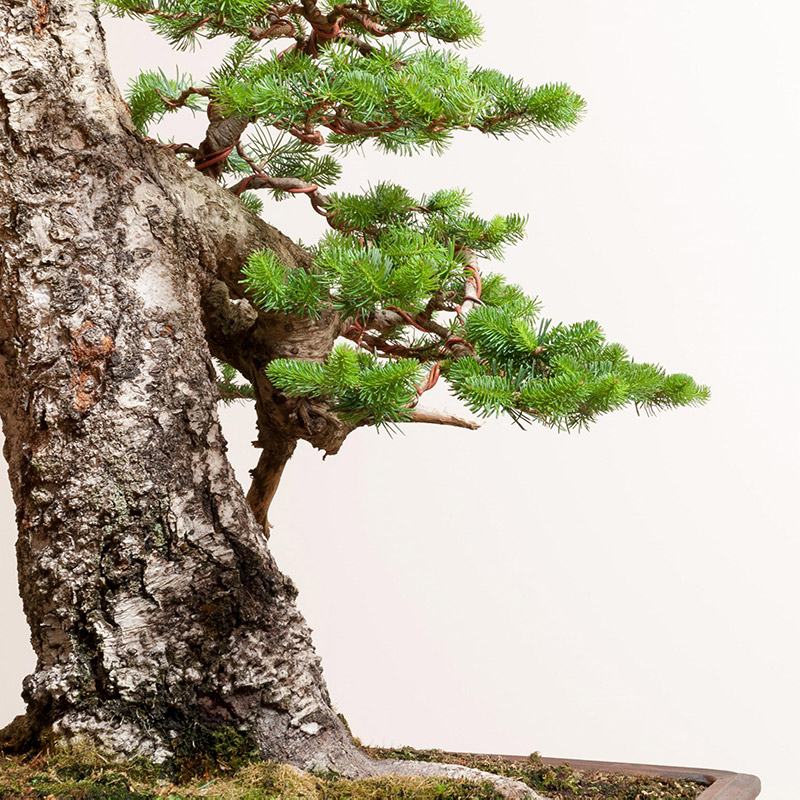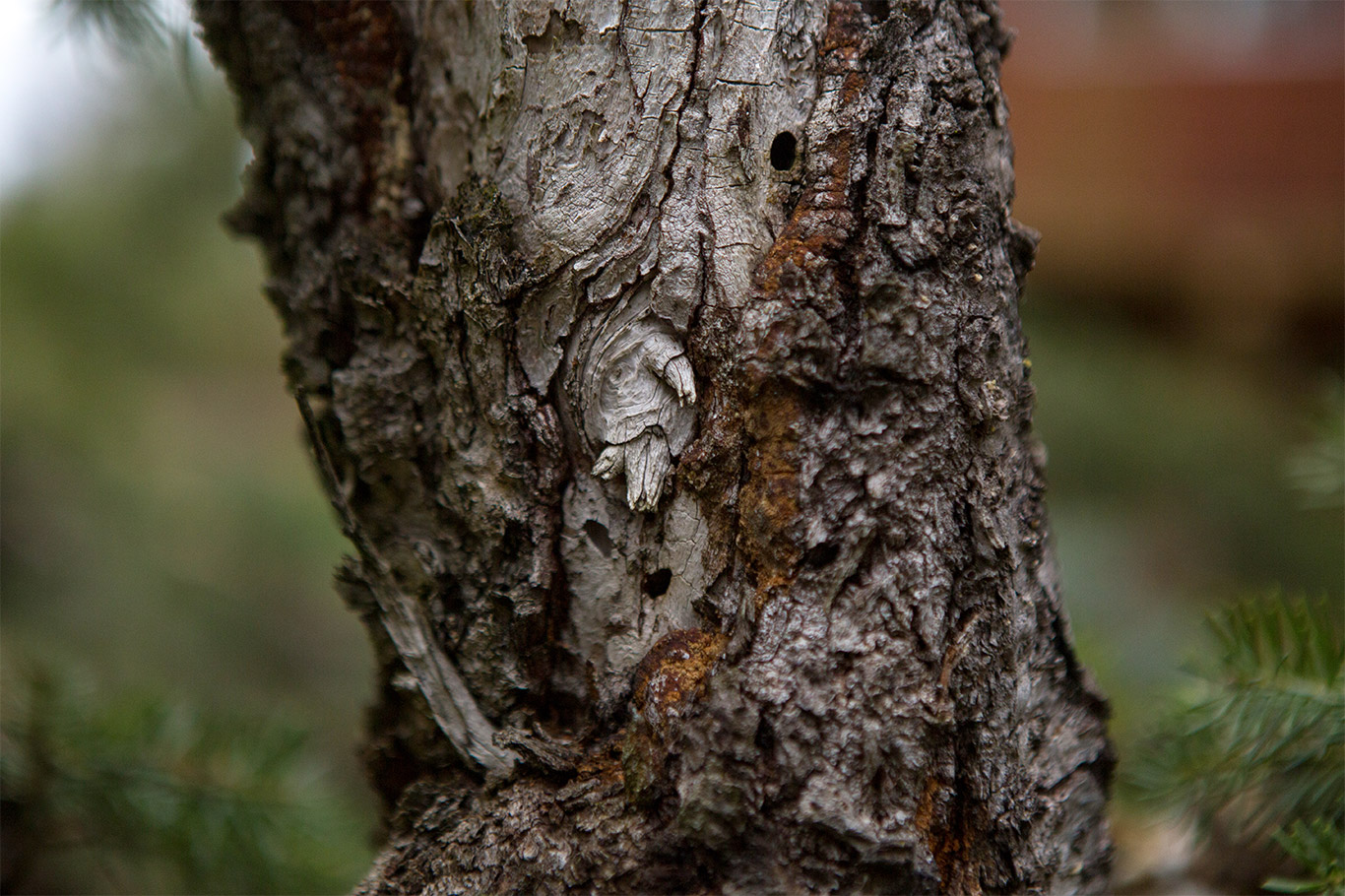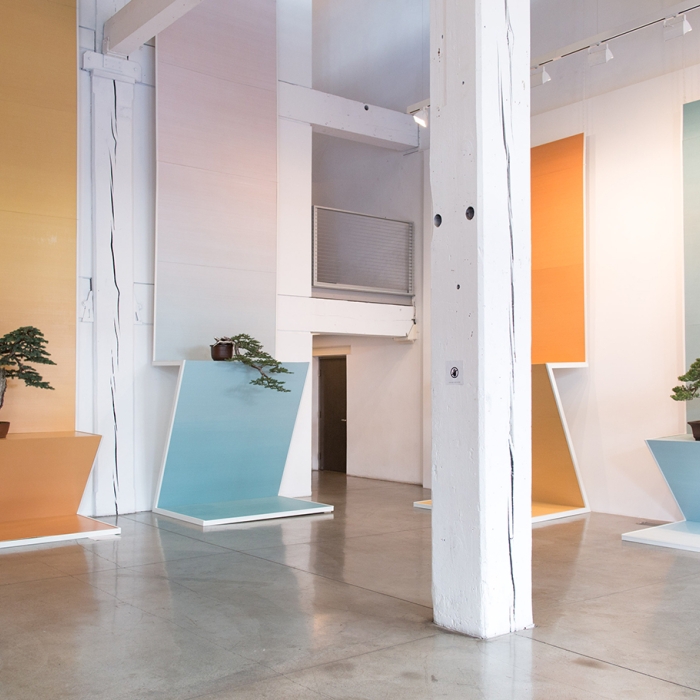Ryan Neil's cutting edge compositions
Windswept Study
The concept behind this piece was to show the element that had created this engelmann spruce—wind. This slab of deadwood the tree is planted on embodies the forceful movement of wind. Even the stark whiteness of the deadwood gives the piece a wind-beaten feel.
"This slab of deadwood the tree is planted on embodies the forceful movement of wind. Even the stark whiteness of the deadwood gives the piece a wind-beaten feel."
This composition was the first time that we had artistically explored representing an element in our design, as opposed to simply alluding to the physical place where the tree grew. People create windswept trees but they put them in a standard container or even on a stone—we wanted to plant this tree in the force that carved it.
Asymmetrical Study
Standard bonsai protocol would deem this piece to be too long. The original artist that tried to root-graft the big long branch to make two trees out of it. When this tree came into Mirai’s possession the first thing we did was take the grafts off.
"This tree looks exactly like Ponderosa pines do on the rolling granite in the Rockies...this undulating, dramatic design."
This tree looks exactly like Ponderosa pines do on the rolling granite in the Rockies. It is this undulating, dramatic design—we wanted to maintain the wildness of this Ponderosa and in that, we’ve made a truly avant-garde tree.
Alpine Study
This piece is about truly bringing the natural environment into the composition—it literally looks like it was plucked out of the mountains on this stone. In the bonsai world, you can see a lot of stone plantings and attempts at creating that that natural feel, but there is still some level of artificiality to it.
"From the tree to the stone to the plants growing inside the container—all of these elements are native and true to form for the Sierras."
From the juniper to the stone to the plants growing inside the container—all of these elements are native and true to form for the Sierras. It is truly an organic piece of American bonsai.

Coastal Study
This pygmy cypress forest is so ground breaking because of the cantilevered visual weight. Design-wise, incorporating a cantilever is always avant-garde. In creating this tree, we were brushing up against limitations of gravity.
"We wanted to recreate the rugged stones of the Pacific Coastline and the trees growing on the cliffs—looking as if they are about to fall into the ocean."
We wanted to recreate the rugged stones of the Pacific Coastline and the trees growing on the cliffs—looking as if they are about to fall into the ocean. With this piece, you can see an echo of the jet stream slamming into coast, tilting the trees down the rockface. It captures the dynamism in the Pacific Coastline, a true Mirai icon. You can see Ryan work on this forest in this livestream.
Timberline Study
For classical bonsai, this subalpine fir breaks the proportional mold, but this is why we love it. A lot of people told us to shorten the massive piece of deadwood soaring upwards, they wanted to balance out the spire with the foliage.
"We chose to leave the striking vertical line, once again prioritizing design reflective of the natural environment over conservative bonsai style."
We chose to leave the striking vertical line, once again prioritizing design reflective of the natural environment over conservative bonsai style. In going outside the ‘acceptable’ proportions, we captured the true wildness of the species as it grows in oxygen deprived, snow-laden, wind-swept mountainsides of the West.




